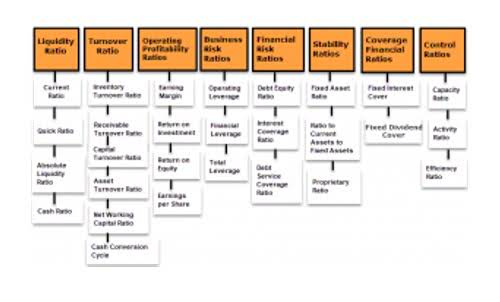Bookkeeping
Nonprofit data for donors, grantmakers, and businesses Candid

That might mean using cash-basis accounting, tracking your gains or losses financial statements for nonprofits at the program level, or more. If your organization is looking to streamline financial reporting and data management, grab a demo of MemberClicks, purpose-built to simplify your organization’s management and enhance data visibility. The operating reserve ratio measures how long a nonprofit can continue its operations without additional revenue. This metric provides insight into the organization’s financial stability and preparedness for unexpected expenses or revenue drops.
General tools just won’t cut it- You need true fund accounting
- This could be a red flag even if other financial statements appear profitable, as cash flow is a critical measure of day-to-day financial health.
- Your nonprofit tracks a lot of financial data day to day, from bank statements to donation records to purchase receipts.
- The financial audit includes footnotes prepared by the auditor to help you interpret the balance sheet, income statement, and cash flow statement.
- It’s likely that the state your nonprofit operates in has also recognized it as tax exempt.
- Deficit plans may seem obvious, but a surplus plan is equally important since the board must determine where to invest or use the excess funds to benefit the organization in the long run.
- Moreover, several watchdog groups keep tabs on the financials of nonprofits.
The Statement of Financial Position gives you a snapshot of your financial health by revealing the underlying value of what your organization owns. You’ll discover what information each report includes, how to use it, and additional resources for exploring in more Retail Accounting depth. Get in touch to learn more about MemberClicks – software designed for the unique needs of associations, chambers and nonprofits. When reviewing financial statement notes, look closely at explanations for any unusual items or significant changes, as these can indicate shifts in financial strategy or unforeseen challenges. Resources owned by the organization, such as cash, investments, property, and receivables.

Zeffy is the only 100% free fundraising platform for nonprofits.
Your financial statements also play a crucial role in maintaining your nonprofit status and passing an independent audit (which you may need to keep your funding). The fundraising efficiency metric shows how cost-effective a nonprofit’s fundraising efforts are by comparing the cost of fundraising to the revenue generated. Donors and funders often look at this metric to evaluate the organization’s effectiveness in using contributions to generate revenue. Maintaining positive cash flow is essential for a nonprofit’s ability to meet its financial obligations and invest in future projects, supporting long-term stability and growth. Positive cash flow from operating activities indicates that the organization can support its regular activities without relying on external funding sources, a sign of financial health. The Statement of Cash Flows breaks down how cash flows in and out of a nonprofit through three primary categories, each offering insight into different aspects of financial management.

The Ultimate Guide to Nonprofit Donor Data Management
Implementing clear guidelines for recording program-related expenses versus administrative or fundraising expenses can also prevent misclassification and improve the clarity of financial statements. Restricted funds are contributions with donor-imposed stipulations on their use. These restrictions may be time-bound or purpose-specific, requiring nonprofits to track and report fund utilization to ensure compliance. Effective management of restricted funds involves robust internal controls and accounting systems to segregate and monitor these funds separately from unrestricted resources. Nonprofit organizations must adhere to specific financial reporting standards.

- It captures your assets (what you own), liabilities (what you owe), and the difference between them (your net assets).
- A budget is a detailed financial plan for nonprofits that outlines projected income and expenses to help your organization allocate resources effectively.
- Preparing accurate and transparent financial statements is essential for building trust with stakeholders and ensuring compliance with regulatory requirements.
- They seek a deeper connection to nonprofits they’ll continue supporting, and trust is paramount.
- Accrual basis accounting means that you record revenues and expenses when they are incurred or earned.
- Many of these statements are similar to what for-profit businesses file, but some significant differences exist.
While managing individual gifts might seem easy, they often require sophisticated tracking systems. These systems handle recurring donations, matching gifts, and varying restriction levels. The Statement of Functional Expenses breaks this down into program costs versus administrative expenses. The Statement of Cash Flows shows you received the money in January but spent it gradually through December. This public accessibility means your financial management needs to be What is bookkeeping spotless.
Understanding Charitable Tax Deductions: A Quick Guide

Nonprofits are an essential part of our society, providing a range of services to communities around the world. One of the biggest obstacles many nonprofits face is finding adequate financing to sustain and grow their operations. Fortunately, various financing options available today can help nonprofits secure the funds needed to fulfill their missions. For instance, quarterly reviews of financial statements provide opportunities to assess trends and make strategic adjustments. Board finance committees should also review financial reports at least quarterly to maintain proper oversight.

Stay compliant with IRS tax exemption requirements
Nonprofits can create campaigns that explain their mission and goals to appeal to potential donors. Once the fundraising goal is met, the nonprofit receives the funds, which they can use for their operations. The accrual accounting method gives a more accurate picture of the organization’s financial health and helps track grants and restricted funds more effectively.
